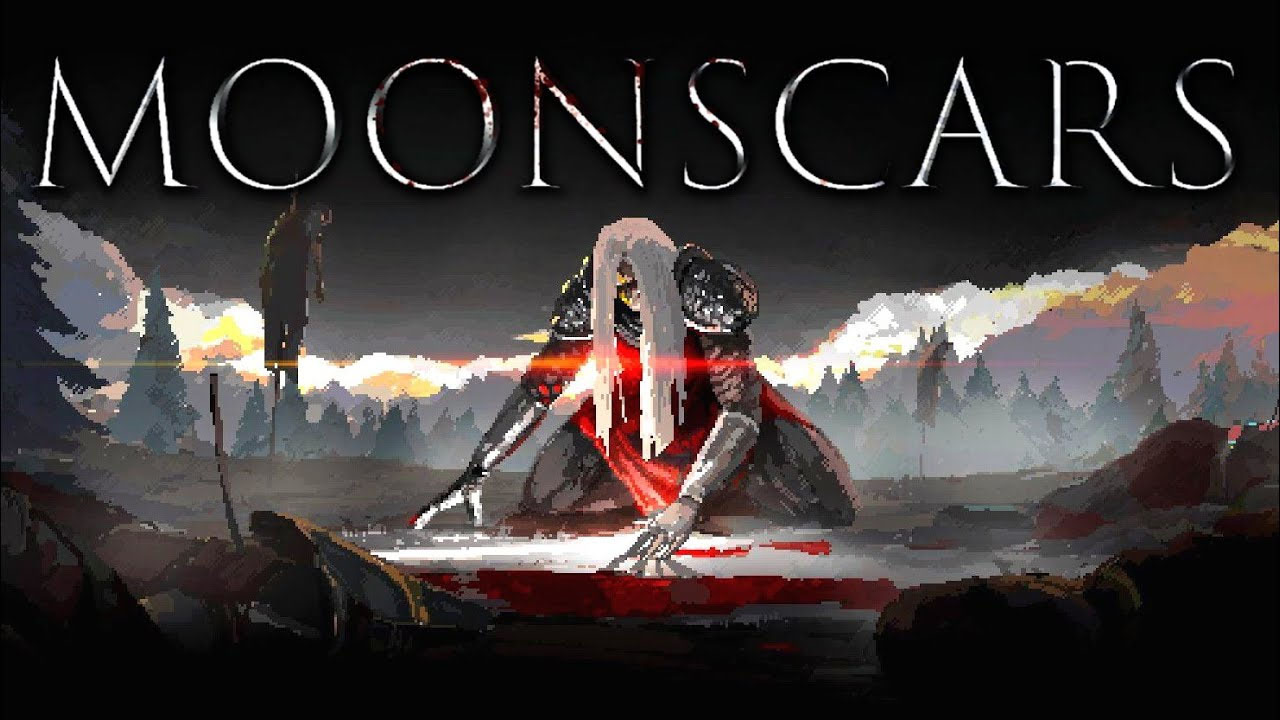
Moonscars bills itself as a “soulslike”, but that is only partially true. While it is true that there are lots of visual flourishes that are associated with the action-RPG subgenre in Moonscars, there are actually fewer RPG elements than one would expect.
Moonscars is more Blasphemous than Death’s Gambit: Afterlife. The amount of character building is limited; there are no stats to manage and growth is done through collectibles and items. Anyone expecting Moonscars to be an action-RPG will be disappointed; this is a traditional “metroidvania”, albeit a very classy one.
For any “metroidvania” to stand out these days is tough. Everyone and their grandma releases their take on the genre, so how does this game manage to make itself distinct in the ever expanding ocean of indie devs trying to make their mark? Find out in the Moonscars review!
Moonscars
Developer: Black Mermaid
Publisher: Humble Games
Platforms: Microsoft Windows, Nintendo Switch, PlayStation, PlayStation 4, PlayStation 5, Xbox One, Xbox Series X|S (reviewed)
Release Date: August 27, 2022
Players: 1
Price: $19.99 USD
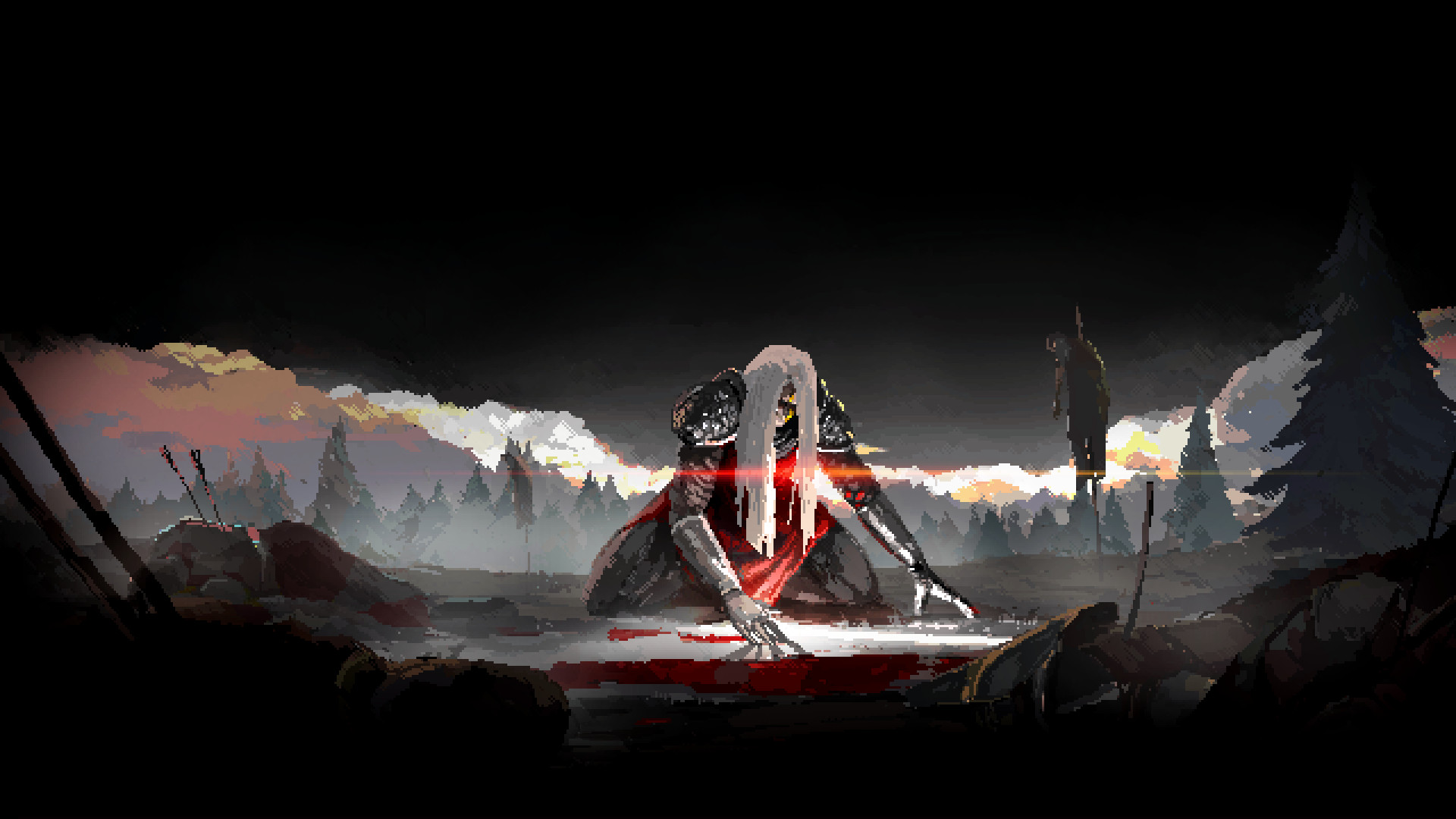
The first thing anyone will notice about Moonscars is its beautiful baroque visual style. The pixel art and animation is very expressive and fluid.
The artists aimed for a rough and painterly texture with the pixel art; something that is rarely attempted or successfully achieved. Every character has very defined and striking silhouettes that make a statement.
Compounded with thoughtful color coding, there is never any mistaking character’s identity or how they’re used in the game’s logic. Sprites flow and have natural transition between poses and actions.
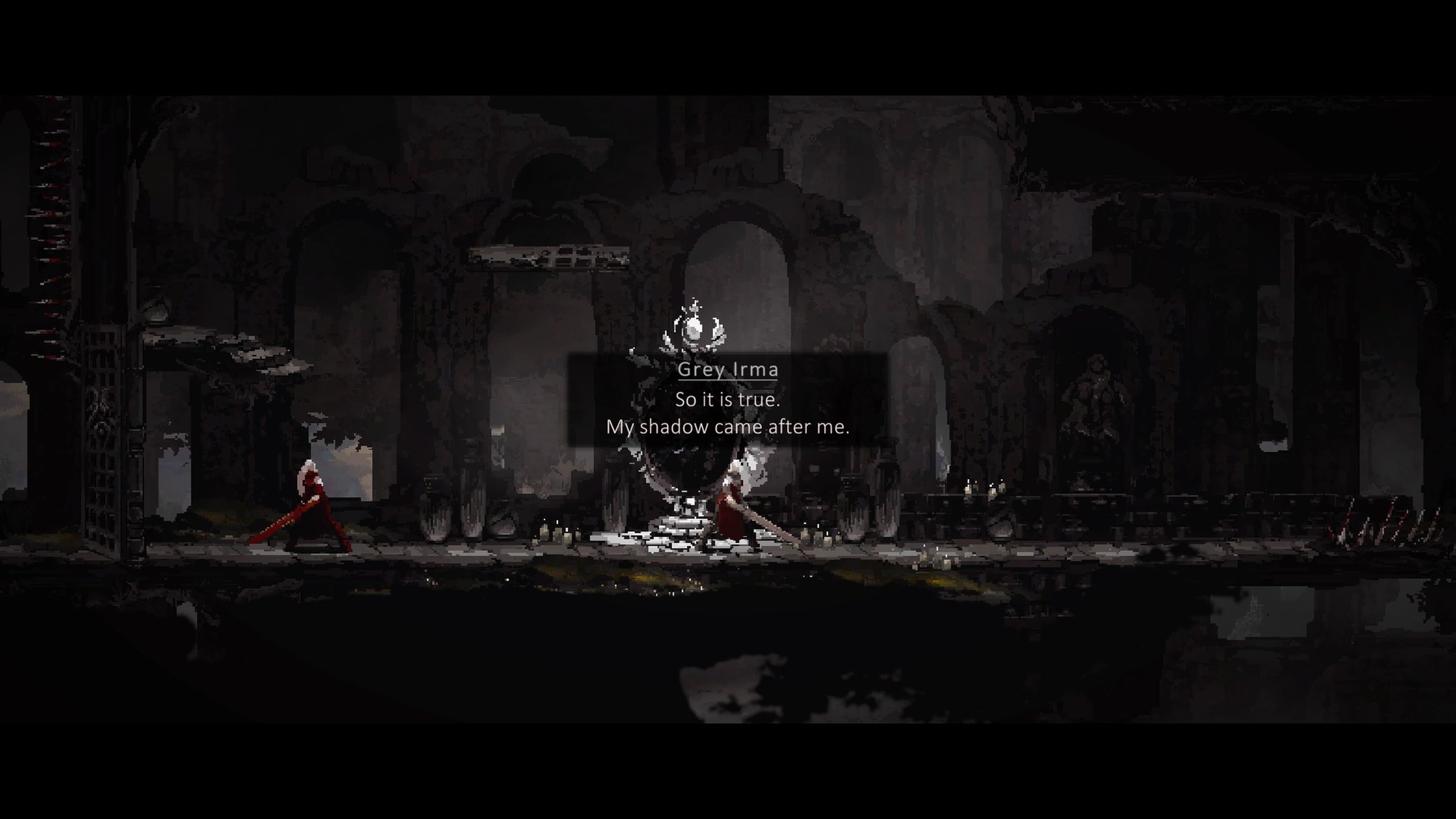
Moonscars‘ background art is especially deft and rich with details. All instances of tiling and repeating pixel art is kept to a bare minimum and is unnoticeable.
Everything appears to be handcrafted and the rough dirtiness of the style enhances the gritty and raw atmosphere. The only drawback to the visuals is the lack of variety.
Moonscars is a very gray and black game. There is spattering of some reds, warmer grays, and cooler grays – but overall, the colors are very muted and united through out the entire game.
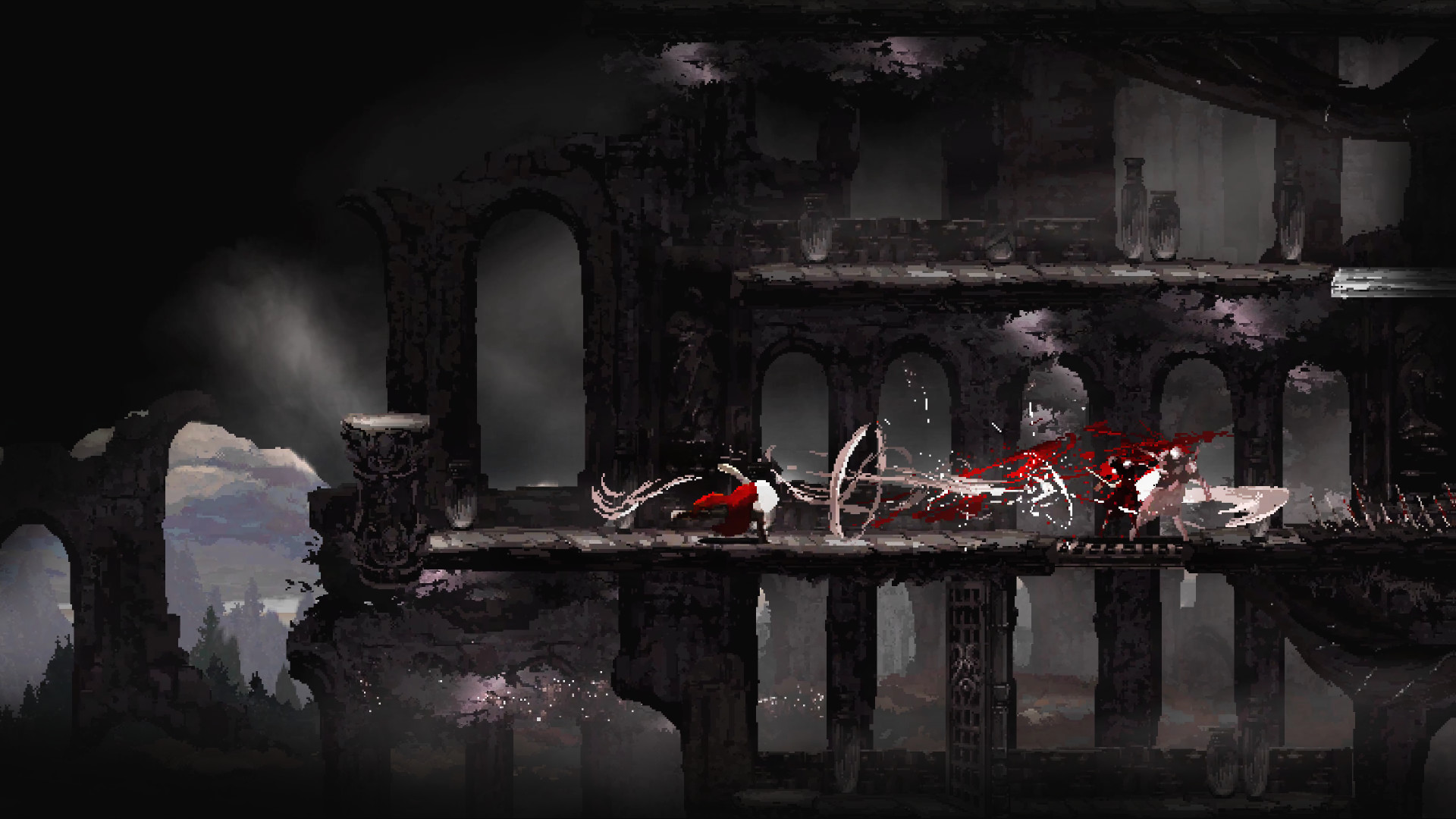
After being impressed by the graphics and moody score, Moonscars will engross players with its gameplay and compelling narrative. The story revolves around a God-like figure, known as the Sculptor and his machinations of the world at large.
At the heart of this dark fantasy is a female knight known as Grey Irma and her existential crisis. She seeks the sculptor for answers, but a dire journey demands extreme measures. Grey Irma would never be able to complete her vision quest without certain death, so she has a clayborne effigy act as her avatar to fulfill her labors.
Players will be controlling the clay clone of Irma for the most part. Whenever the clayborne dies or falls in battle, a new one replaces it and knowledge is carried over. Moonscars has several systems in place that capitalize on this concept and one of them involves fighting Irma’s prior sculpts.
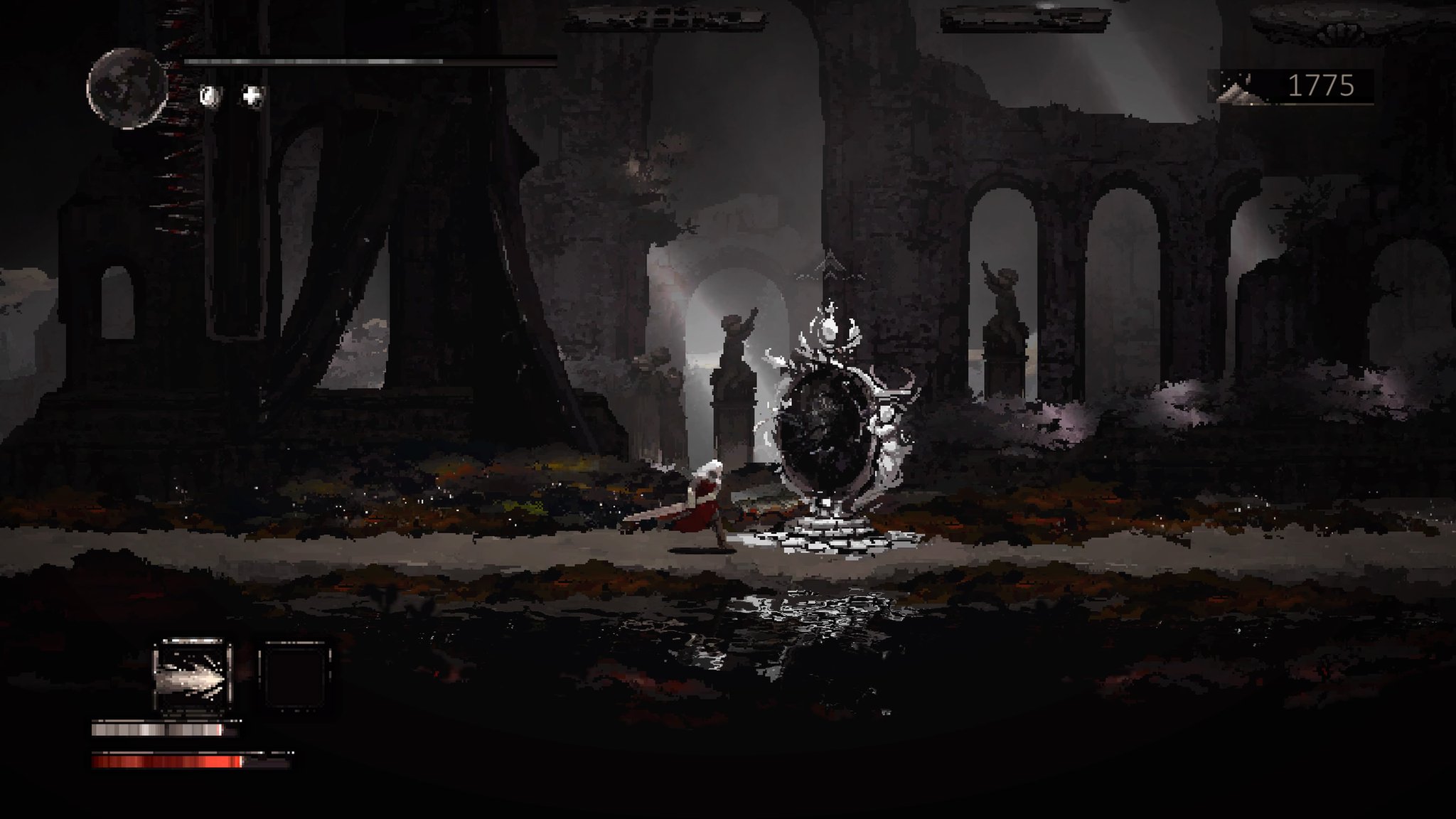
Whenever gamers try to go to the hub area that is like the equivalent to the Hunter’s Dream from Bloodborne, Irma casts off her shell and a new clayborne is created.
What used to be a safe spot and area checkpoint becomes a battlefield where players will have to fight the previous Irma, complete with all her boons and special attacks too.
The simple act of using these hubs come with a risk. This is a major pillar in Moonscars’ design, as almost every choice has a trade-off. Defeating foes not only earns bone ash (Moonscars’ XP equivalent), but the more powerful foes drop glands, a rarer commodity.
Why would anyone want glands? Dying in Moonscars makes the enemies hit harder and take more hits, but also drop more bone ash to learn more moves or buy accessories for passive bonuses. Glands are used to reverse the effects of a red moon that boosts the strength of foes, but are also a currency in specialty shops too.
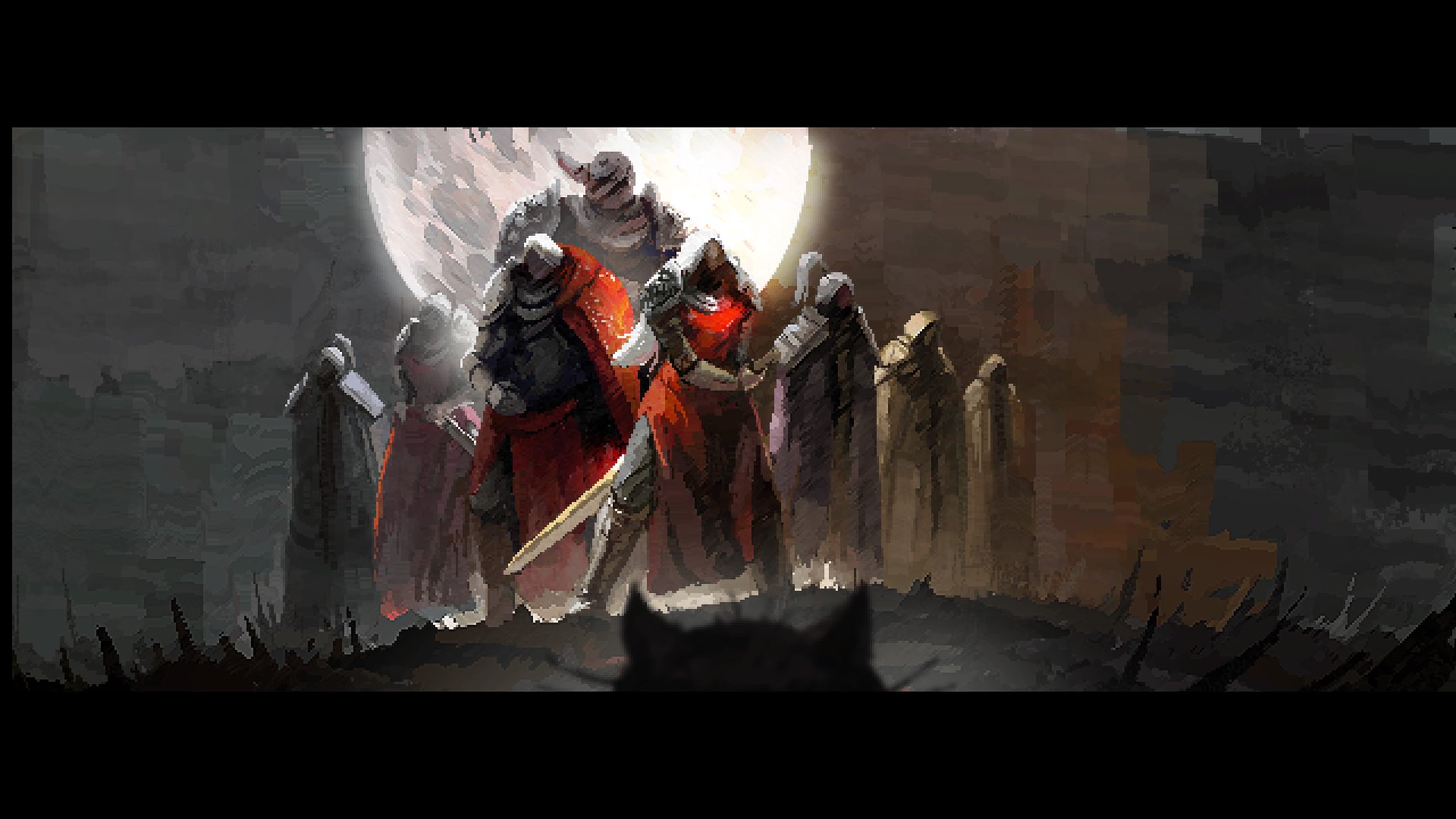
There is more to defeating foes to earn XP or glands to buy more powerful moves or upgrades. What sets Moonscars apart from its contemporaries is a boon system that gives players a choice of various temporary passive boosts. Sadly, players lose these enhancements if they travel to the hub or die.
These temporary boons are the last line of defense for the player if the battles are too difficult. Some areas are festooned with really powerful enemies and even if gamers manage to acquire every maximum health upgrade up in an area, getting hit during a red moon could mean losing half of Irma’s HP or more.
Moonscars won’t ever let players fall into a state of complacency. Boons are on a randomized rotation and only one can be chosen at a time, with a maximum of a possible five active. This keeps the gameplay spicy and interesting; there is no guarantee that less skilled players will get an easy out.
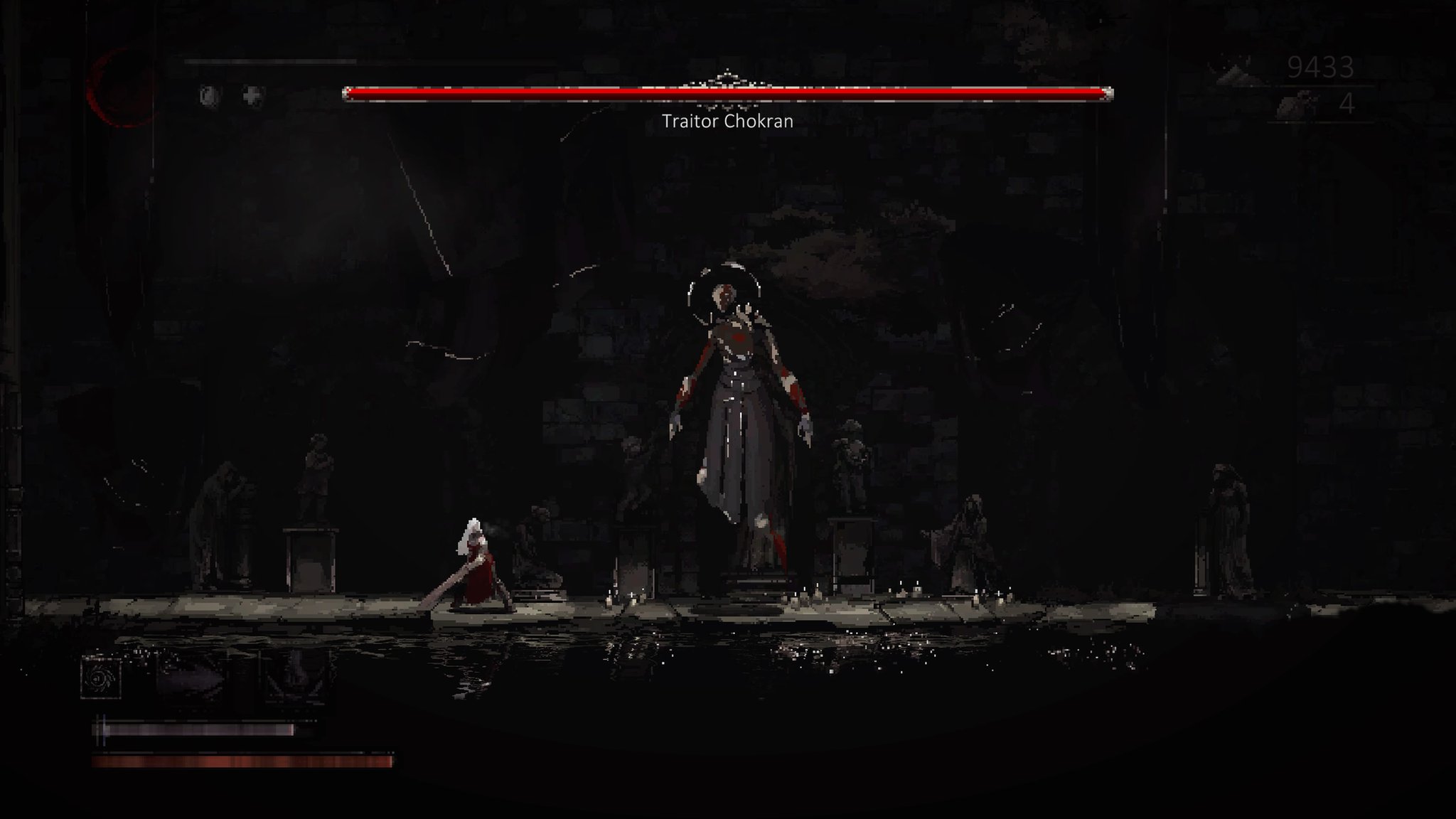
Moonscars‘ various systems and visuals that keep players on edge, but anyone who craves reactive swordplay and pattern recognition will be delighted. Grey Irma is able to dodge with a generous amount of invincibility frames, has a vicious sword combo with a satisfying crunch, and can parry with a fair window.
On top of her combo, Irma can learn special weapon attacks that have a longer lead-up animation. These abilities get cycled out whenever players cast a shell and have to fight her clone.
Some of the attacks can be long range or short and vary in utility. These all contribute to the flexible gameplay that makes Moonscars to engaging.
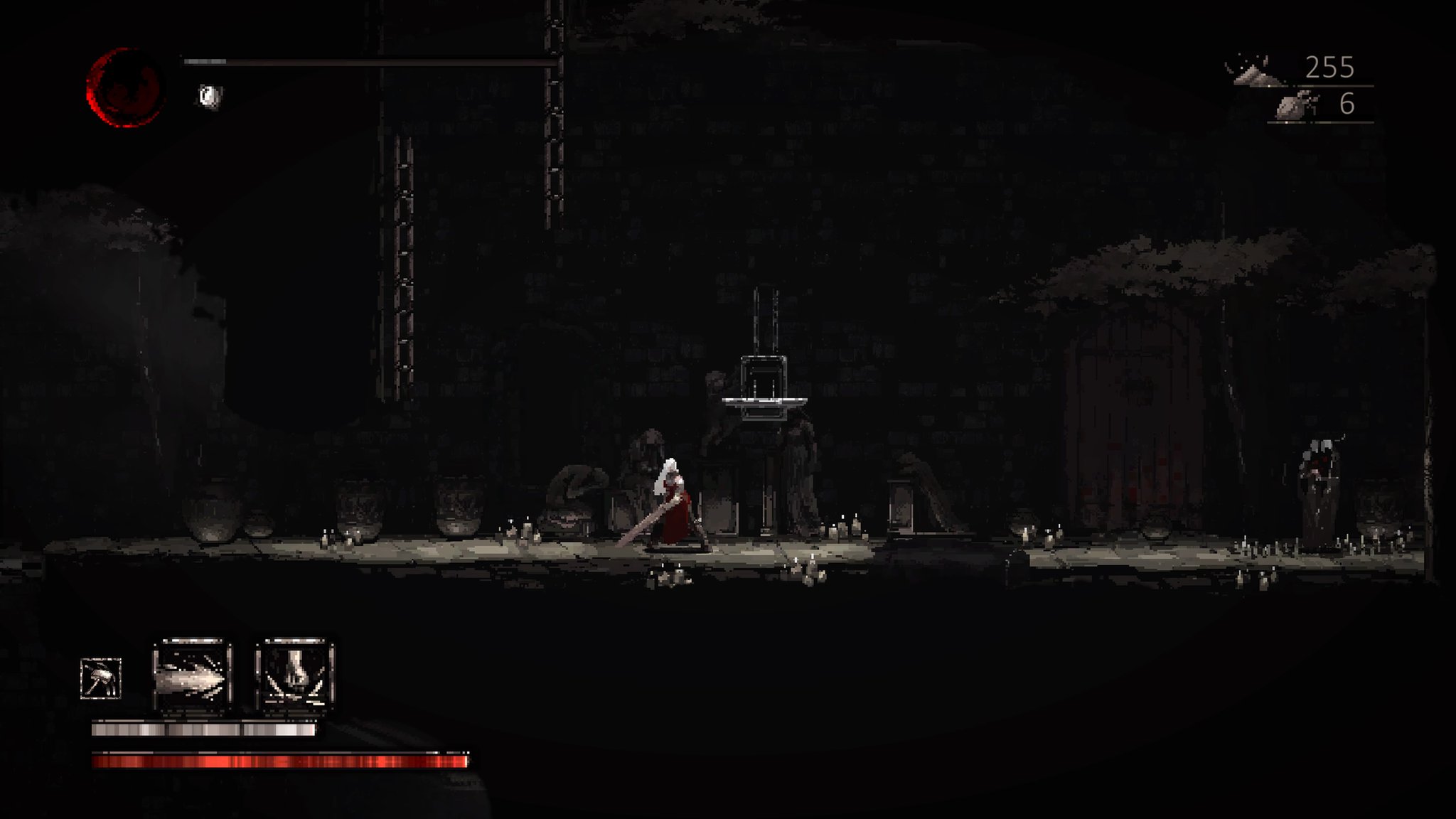
Not everything in the gameplay is perfect. Like most “soulslikes”, Moonscars has a corpse run mechanic where the player’s stash of collected XP is dropped where they died.
Where this becomes a problem is that it isn’t uncommon for the stash to be spawned on platforms or areas that make it impossible to recollect. Amusingly, Moonscars’ utility for the XP isn’t as crucial as one would expect.
The bone ash is only used for buying accessories, temporary boons or witchery/special attacks. Bone ash is far too disposable to worry about and if player’s persevere, there is almost no need for it. This can set gamers free of having to worry about resources.
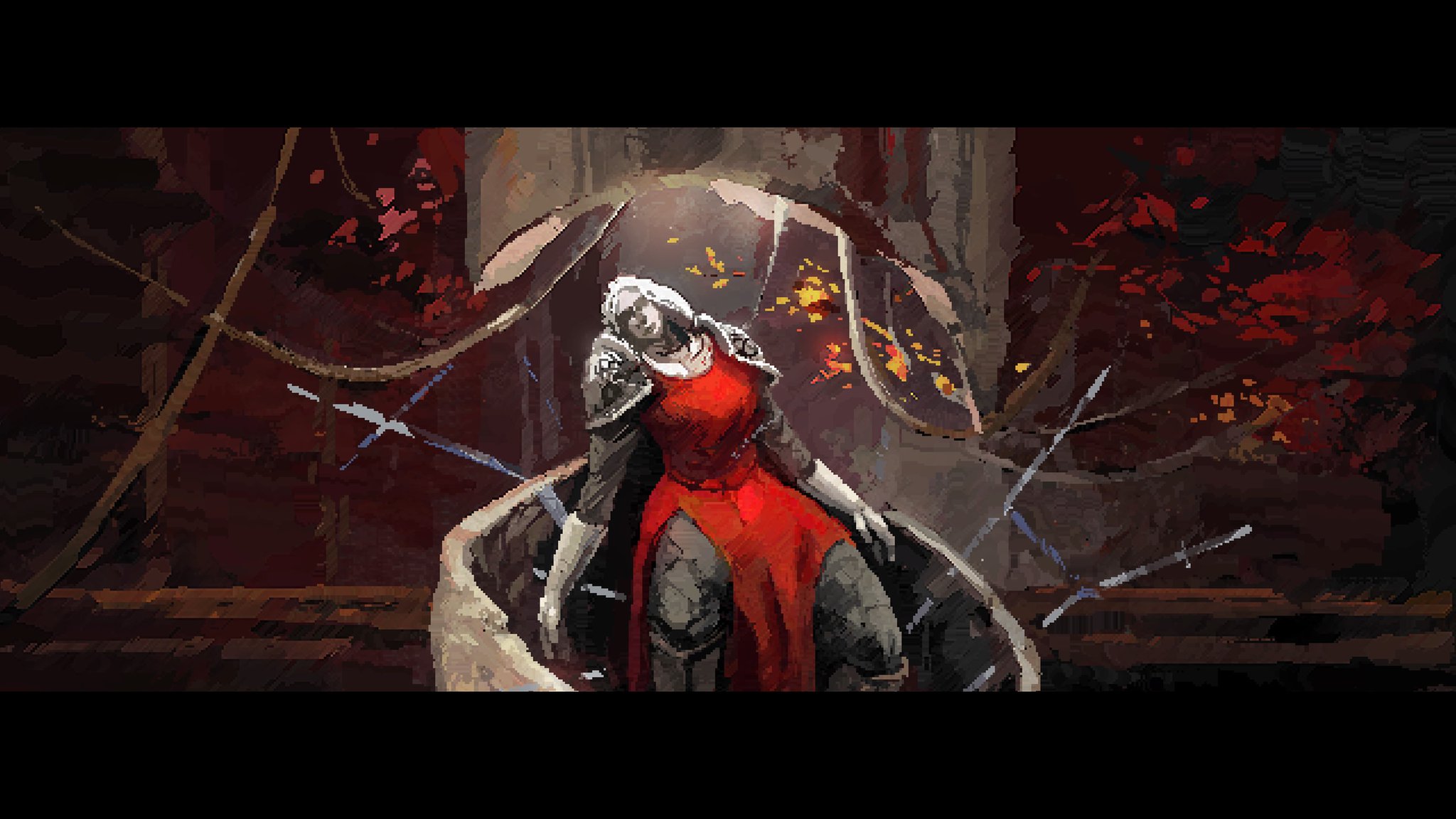
As beautiful as Moonscars can be, the one area the artists skipped on was the menus and interface graphics. Fonts and menus look suspiciously stock and the choice of a sans typeface utterly clash with the ornate and baroque art style. There should have been more care put into these elements to better represent the ambiance.
Anyone who enjoyed games like Blasphemous, Dark Devotion or thought that Symphony of the Night was bloated with extraneous RPG elements, will adore Moonscars. The core combat mechanics are deep enough to carry a determined player and the multitude of systems give less skilled gamers just enough wiggle room to tip the scales in their favor without it ever becoming an easy game.
Moonscars was reviewed on PlayStation 5 using a copy provided by Humble Games. You can find additional information about Niche Gamer’s review/ethics policy here. Moonscars is now available for Windows PC (via Steam), PlayStation 4, PlayStation 5, Nintendo Switch, Xbox One and Xbox Series X|S.